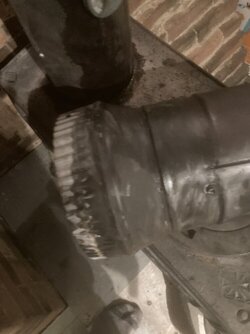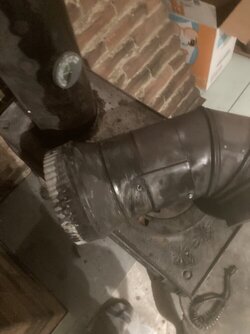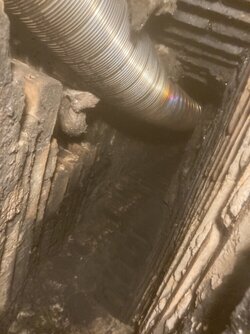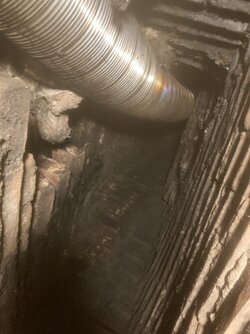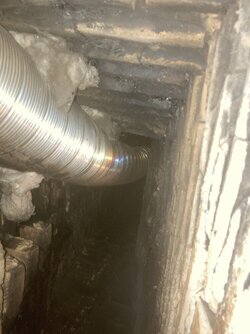Instead of placing a tee, there seems to be just a snout with a strap.
A hole is cut in the 7" stainless steel liner.
Is this remotely normal?
I should make this part of my "clown show" series!
My previous posts have shown:
- Burnt spray foam that I pulled out from behind the bricks of my fireplace. Combustibles in smoke shelf is now in trend!
- 8 inch round liner put on an old fireplace. You too can use your living room as a sausage smoker!
- Horizontal stove pipe on a furnace with three 90 degree bends (who doesn't love 9 gallons of creosote after half a season?!)
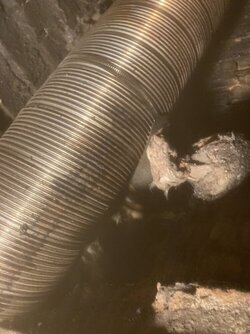
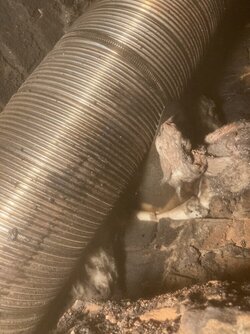
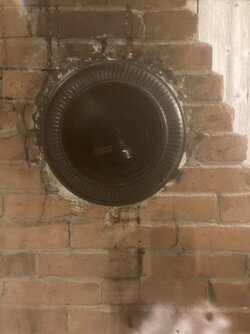
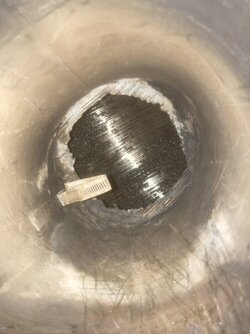
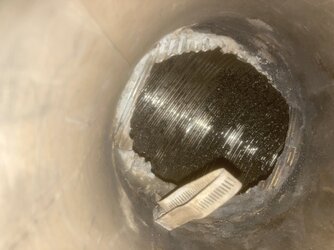
A hole is cut in the 7" stainless steel liner.
Is this remotely normal?
I should make this part of my "clown show" series!
My previous posts have shown:
- Burnt spray foam that I pulled out from behind the bricks of my fireplace. Combustibles in smoke shelf is now in trend!
- 8 inch round liner put on an old fireplace. You too can use your living room as a sausage smoker!
- Horizontal stove pipe on a furnace with three 90 degree bends (who doesn't love 9 gallons of creosote after half a season?!)







